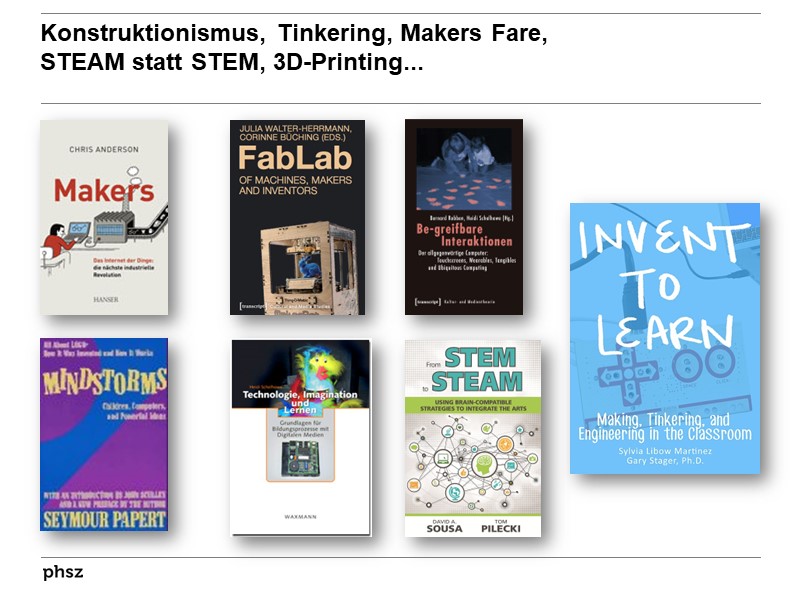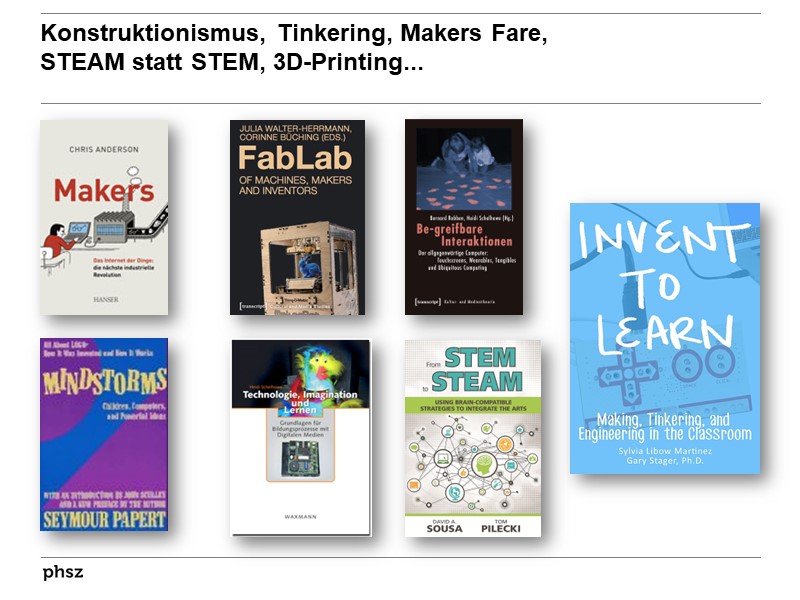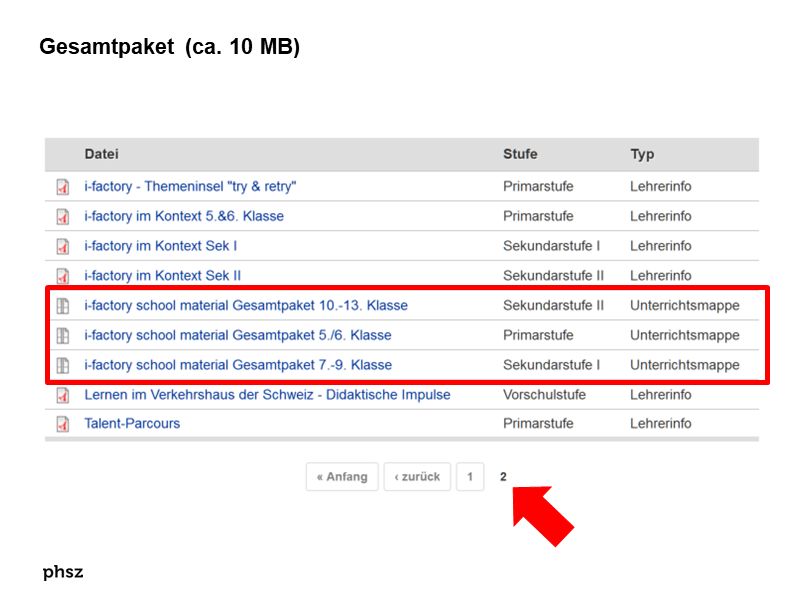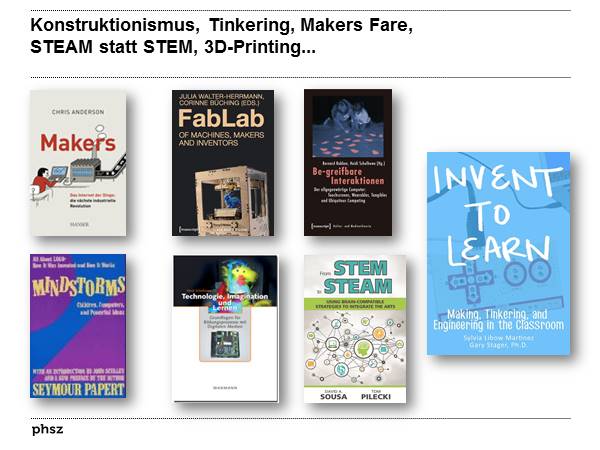FabLabOf Machines, Makers and Inventors
|

|
 Diese Seite wurde seit 1 Jahr inhaltlich nicht mehr aktualisiert.
Unter Umständen ist sie nicht mehr aktuell.
Diese Seite wurde seit 1 Jahr inhaltlich nicht mehr aktualisiert.
Unter Umständen ist sie nicht mehr aktuell.
 Zusammenfassungen
Zusammenfassungen
 Ten years after the first FabLab (a so called fabrication laboratory) was opened at MIT, more than 120 FabLabs exist all over the world. Today, it is time to look back at a decade of FabLab activities. This book shows how small production devices, such as laser cutters and 3D printers, and dedicated educationists, researchers and FabLab practitioners transform the fields of learning, work, production, design, maker culture, law and science on a global scale.
Ten years after the first FabLab (a so called fabrication laboratory) was opened at MIT, more than 120 FabLabs exist all over the world. Today, it is time to look back at a decade of FabLab activities. This book shows how small production devices, such as laser cutters and 3D printers, and dedicated educationists, researchers and FabLab practitioners transform the fields of learning, work, production, design, maker culture, law and science on a global scale.In this composition experts from various countries, such as Germany, India or the USA, and distinguished academic institutions, such as MIT or Stanford University, discuss theoretical questions and introduce practical approaches concerning FabLab activities.
 Dieses Buch erwähnt ...
Dieses Buch erwähnt ...
 Begriffe KB IB clear |  3D-Drucker 3D-Drucker 3D-Printer
, 3D-Printer
,  Design Design design
, design
,  Lernen Lernen learning
, learning
,  Maschine Maschine machine
, machine
,  Universität Universität university
, university
,  Wissenschaft Wissenschaft science science
|
 Dieses Buch erwähnt vermutlich nicht ...
Dieses Buch erwähnt vermutlich nicht ... 
 Nicht erwähnte Begriffe | 3D-Drucker in der Schule, Hochschule |
 6 Vorträge von Beat mit Bezug
6 Vorträge von Beat mit Bezug
- Informatik konkret machen
Ideen zum Informatikunterricht in der Volksschule
Fachbereich Medienbildung, PH Zürich, 03.10.2013

- i-factory teacher workshop
6x jährlich durchgeführter Workshop - Version 2014 des Vortrags
Verkehrshaus der Schweiz, Luzern, 04.06.2014

- Informatik in der Volksschule: Was - Warum - Wie?
Einstiegsvortrag Kaderkurs "Informatische Bildung" der OSKIN
PH Zug, 14.01.2015

- Medien, Informatik und Anwendungskompetenzen
Informatik im Lehrplan 21: Situierung und Umsetzungsideen
Workshop der kantonalen ICT-Center, PHBern, 25.08.2015

- i-factory school kit 2016
Verkehrshaus der Schweiz, Luzern, 30.03.2016

- Integration & Umsetzung von "Medien & Informatik" im Zyklus 3
Input am Treffen des Netzwerks "Zyklus 3" der Bildungsregion Zentralschweiz (BKZ)
Niederhasli, 06.12.2016

 Einträge in Beats Blog
Einträge in Beats Blog
 Zitationsgraph
Zitationsgraph
 Zitationsgraph (Beta-Test mit vis.js)
Zitationsgraph (Beta-Test mit vis.js)
 Zeitleiste
Zeitleiste
 10 Erwähnungen
10 Erwähnungen 
- Handbuch Medienpädagogik (Uwe Sander, Friederike von Gross, Kai-Uwe Hugger) (2008)
- The Promise of the Maker Movement for Education (Lee Martin) (2015)


- Rethinking Learning in an Age of Digital Fluency - Is being digitally tethered a new learning nexus? (Maggi Savin-Baden) (2015)

- Individuell fördern mit digitalen Medien - Chancen, Risiken, Erfolgsfaktoren (Bertelsmann Stiftung) (2015)
- Szenarien lernförderlicher IT-Infrastrukturen in Schulen - Betriebskonzepte, Ressourcenbedarf und Handlungsempfehlungen (Andreas Breiter, Björn Eric Stolpmann, Anja Zeising) (2015)


- Szenarien lernförderlicher IT-Infrastrukturen in Schulen - Betriebskonzepte, Ressourcenbedarf und Handlungsempfehlungen (Andreas Breiter, Björn Eric Stolpmann, Anja Zeising) (2015)
- Making Through the Lens of Culture and Power - Toward Transformative Visions for Educational Equity (Shirin Vossoughi, Paula Hooper, Meg Escudé) (2016)

- Modality matters - Understanding the Effects of Programming Language Representation in High School Computer Science Classrooms (David Weintrop) (2016)


- Making sense of making - critical issues in the integration of maker education into schools (Anna-Lena Godhe, Patrik Lilja, Neil Selwyn) (2019)


- The Charisma Machine - The Life, Death, and Legacy of One Laptop per Child (Morgan Ames) (2019)

- Non-Formal and Informal Science Learning in the ICT Era (Michail N. Giannakos) (2020)


- 2. Applying the Lens of Science Capital to Understand Learner Engagement in Informal Maker Spaces (Heather King, Elizabeth A. C. Rushton)


- 2. Applying the Lens of Science Capital to Understand Learner Engagement in Informal Maker Spaces (Heather King, Elizabeth A. C. Rushton)
- Medienpädagogisches Making - ein Begründungsversuch (Thomas Knaus, Jennifer Schmidt) (2020)


 Co-zitierte Bücher
Co-zitierte Bücher

Technologie, Imagination und Lernen
Grundlagen für Bildungsprozesse mit Digitalen Medien
(Heidi Schelhowe) (2007)


Hanging Out, Messing Around, and Geeking Out
kids living and learning with new media
(Mizuko Ito, Sonja Baumer, Matteo Bittanti, danah boyd, Rachel Cody, Becky Herr-Stephenson, Heather Horst, Patricia G. Lange, Dilan Mahendran, Katynka Z. Martínez, C.J. Pascoe, Dan Perkel, Laura Robinson, Christo Sims, Lisa Tripp) (2010)



Be-greifbare Interaktionen - Der allgegenwärtige Computer
Touchscreens, Wearables, Tangibles und Ubiquitous Computing
(Bernd Robben, Heidi Schelhowe) (2012)

Using Brain-Compatible Strategies to Integrate the Arts
(David A. (Anthony) Sousa, Thomas J. Pilecki) (2013) Volltext dieses Dokuments
Volltext dieses Dokuments
 Standorte
Standorte 
 Bibliographisches
Bibliographisches 
 Beat und dieses Buch
Beat und dieses Buch
Beat hat dieses Buch während seiner Zeit am Institut für Medien und Schule (IMS) ins Biblionetz aufgenommen. Beat besitzt kein physisches, aber ein digitales Exemplar. (das er aber aus Urheberrechtsgründen nicht einfach weitergeben darf). Aufgrund der wenigen Einträge im Biblionetz scheint er es nicht wirklich gelesen zu haben. Beat hat dieses Buch auch schon in Vorträgen sowie in Blogpostings erwähnt.
















 , 8429 kByte)
, 8429 kByte) 



 Biblionetz-History
Biblionetz-History